 |
The News Service | |||
Profiles | ||||
|
Life science departments welcome 10 new faculty for 2005-06
Ten new members of the regular faculty will begin their work in life sciences at Brown this fall, including Laurie Heller in Cognitive and Linguistic Sciences; Stephen Buka in Community Health; Elizabeth Brainerd in Ecology and Evolutionary Biology; Alexander Brodsky and William Fairbrother, Stephen Helfand, and Rebecca Page in Molecular Biology, Cell Biology and Biochemistry; Richard Bennett in Molecular Microbiology and Immunology; David Ress in Neuroscience; and Zijin (Jean) Wu in Public Health. 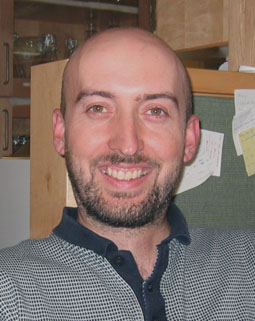 Richard Bennett Candida albicans is a fungus that grows happily in the gut. Most of the time, the parasite is harmless. Occasionally, it becomes a bother, causing diaper rash, thrush or a yeast infection. In some cases, however, Candida kills. When the immune system is weakened – which is the case in transplant recipients, chemotherapy patients, premature babies or people with AIDS – Candida can invade the bloodstream. These full-body infections are fatal 30 to 50 percent of the time. “A really serious bug,” Richard Bennett says. Just how does this typically benign fungus make people sick, sometimes fatally so? Bennett, a new assistant professor in the Department of Molecular Microbiology and Immunology, hopes to find out. An expert in fungal pathogenesis, Bennett has a hunch: Candida is a shape-shifter. It can grow into either round yeast cells or elongated strands called hyphal cells. In its yeast form, it can also switch between white and opaque phases. “This ability to switch back and forth between forms is central to how Candida infects its host,” he explains. “These changes let it respond to the environment in the host, promote its survival, and allow it to hide from the immune system. If you can pinpoint the genes used in the process, you could stop it from causing infection.” While scientists have long studied the disease-producing powers of bacteria, viruses and parasites, fungal pathogenesis is an emerging area of research, according to Christine Biron, the department chair. “It’s a hot new field and Richard will be a real leader in it,” Biron says. “So we’re pretty excited to have him.” Bennett was the top candidate for the position, Biron says. Research relevance and rigor was one reason. Pedigree was another. The 35-year-old native of South Wales received first-class honors in biochemistry at the University of Cambridge. He went on to earn his Ph.D. from the Imperial Cancer Research Fund at Clare Hall Laboratories in the United Kingdom. From there, he went to Harvard as a postdoctoral fellow. For the last four years, Bennett has worked in the lab of Alexander Johnson at the University of California–San Francisco, where he studies Candida. In 2002, Bennett and Johnson published research that showed, for the first time, how the fungus mates then sheds or gains chromosomes – a process that could be key to understanding how it causes illness. Bennett’s research could have broader implications. Candida’s tendency to subtract or add chromosomes during replication is a phenomenon known as genetic instability. This same phenomenon can predispose cells to cancer. It could also allow microbes to become resistant to drugs. Bennett looks forward to continuing his pursuit of Candida when he arrives on campus in January 2006. “I like Brown’s moderate size. It seems the kind of place that you can easily learn a lot from your colleagues. And you won’t get lost. If you do good research, you will be rewarded.” 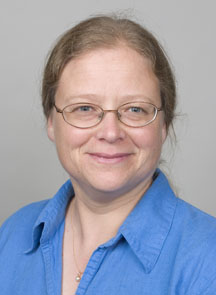 Elizabeth Brainerd As a child, Elizabeth Brainerd spent summers hip-deep in Nantucket Sound, trolling for fish with a 12-foot seine or combing the shores of East Falmouth for snails or hermit crabs. As an adult, the natural world continues to beguile her. A functional morphologist, Brainerd has studied stingray jaws, salamander lungs, frog eyes and the adhesive footpads of insects. She helped explain how seahorses make clicking sounds – the process involves a sliding bone in their heads – and how the tiny, blind, burrowing threadsnake rakes insects into its mouth using a triple-jointed jaw. The discovery, published in Nature in 1999, details the only vertebrate feeding mechanism in which prey is transported exclusively by lower jaw movements. “Beth’s research has a wonderful, playful quality to it,” said Mark Bertness, chair of the Department of Ecology and Evolutionary Biology, where Brainerd will teach as a professor of medical science. “Beth is also brilliant. As a functional morphologist, she is really tops in the field.” After graduating from Harvard with highest honors in biology, Brainerd stayed on to get her Ph.D. in the Department of Organismic and Evolutionary Biology. Under the tutelage of Karel Liem, a gifted teacher, popular lecturer and the university’s curator of ichthyology, Brainerd was able to fuel her fascination with fish. Why fish? Brainerd launches into an explanation of the lateral line, a sensory system fish use to gauge water pressure changes. Tiny bundles of cells called neuromasts run along the sides of their bodies and onto their heads, helping in everything from hunting to schooling. “Fish are so supremely adapted to their aquatic environment,” she said. “They have this major sensory system we have to work very hard to imagine. Humans have nothing like it.” Once, out in the eelgrass on Cape Cod, Brainerd caught a pufferfish. She’s been intrigued ever since. Her dissertation, in fact, was on the biomechanics of puffer inflation. It’s a defense mechanism which renders puffers too big – or makes them appear too scary – to be swallowed by predators. Some of Brainerd’s research footage was used to create the character of Bloat, the friendly puffer in the Academy Award-winning animated film “Finding Nemo.” For the last decade, Brainerd has taught biology at the University of Massachusetts–Amherst. She directed the Interdepartmental Program in Organismic and Evolutionary Biology and served as curator of fishes, amphibians and reptiles at the Massachusetts Museum of Natural History. But Brainerd always wanted to teach at Brown, which boasts one of the best morphology groups in the country. The opportunity to work with Stephen Gatesy, Tom Roberts, Sharon Swartz and Christine Janis, she said, is “like going to a scientific meeting every day. I am thrilled.” Brainerd will continue her fish work – she is currently exploring the biomechanics of swimming muscles – and has plans to help build a special X-ray facility at Brown that would allow scientists to watch animals move in 3-D in real time. Like Brainerd’s research resume, the facility would be one of a kind. 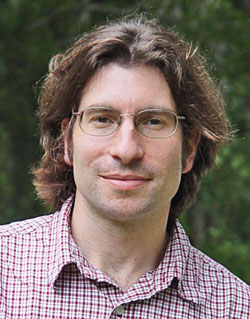 Alexander Brodsky Genetic code comes in two flavors. There is DNA, the sugar and phosphate concoction that represents the major source of genetic material in humans. Then there is RNA. Different sugar. One divergent base. A whole lot more biochemical mystery. “There is still a lot we don’t know about RNA – how it is made, what happens to it,” said Alexander Brodsky. “It’s still an underappreciated field.” Quiet corners, however, can be good places to make noise. Which is what Brodsky may well do in the Department of Molecular Biology, Cell Biology and Biochemistry. The 35-year-old assistant professor is setting up shop at the Laboratories for Molecular Medicine (70 Ship St.) in the Center for Genetics, Genomics and Proteomics, where he will study RNA-binding proteins and how they help turn genes on and off in different types of cells and tissues. Mapping these gene networks is particularly important in understanding cancer, both its causes and its possible cures. To chart these networks, Brodsky helped develop a new technique at Boston’s Dana-Farber Cancer Institute, where he’s worked as a research fellow since 1998. Called ChIP-chip, the tool tracks the activity of RNA-binding proteins throughout the genome. In research published in July in Cell, Brodsky and his Harvard colleagues mapped gene activity triggered by estrogen, a hormone that plays a role in breast cancer, in two human chromosomes. These maps can pinpoint promising targets for cancer drugs. “It’s pretty open-ended, basic research,” Brodsky said. “What do these RNA-binding proteins do? How are they involved in cancer?” At Brown, Brodsky hopes to collaborate with biologist John Sedivy to test the technology with c-Myc, a protein that causes cells to multiply. If the protein is produced unchecked, it can cause breast, colon and other types of cancer. C-Myc contributes to more than 70,000 deaths in the United States each year. Brodsky said the opportunity to work with top researchers like Sedivy created a pull to Providence. So did the new laboratories on Ship Street. And so did the chance to collaborate easily across disciplines. A graduate of the University of Pennsylvania and the Massachusetts Institute of Technology, where he received his Ph.D. in biological chemistry, Brodsky has earned several academic, professional and government prizes, including a prestigious award for young scientists from the National Human Genome Research Institute. So what’s Brodsky’s biggest achievement so far? He laughs: “Getting a job at Brown.” 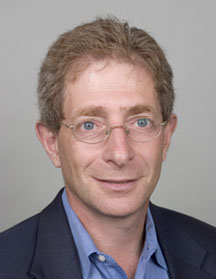 Stephen Buka Think about epidemiology. Does malaria come to mind? Smallpox? SARS? A public health hero, peering into a microscope or racing around in protective gear, in a struggle to stop a deadly outbreak of ebola or bird flu? OK. How about suicide? Drug abuse? Learning disabilities? And a Harvard guy, poring over medical charts or studying blood sample results, in a battle to end behavioral disorders? “This is not your grandmother’s epidemiology,” says Stephen Buka. In a field long linked with communicable or chronic disease, Buka is a compelling exception. The 48-year-old Harvard School of Public Health professor – now joining Brown’s Program in Public Health – is interested in behavioral problems. Specifically, Buka is concerned with preventing disorders that hurt and kill children and teens. His weapon of choice is not a microscope. It’s the large-scale longitudinal study. Buka oversees the New England Family Study or NEFS, which began 46 years ago. Harvard and Brown faculty followed 17,000 pregnant women and their children in Boston and Providence, tracking their physical and mental health for seven years. Twenty years ago, Buka revived the study. The Brown-Harvard NEFS team has now successfully hunted down most of the original participants and enrolled them in a series of interview and clinical studies, which include genetic tests. The aim is to explain how pregnancy and birth complications affect health in adolescence and adulthood in the form of psychiatric disorders such as schizophrenia, bipolar disorder, substance use, learning disabilities, attention deficit disorder, depression and suicide. The NEFS has produced critical findings. In one set of results, Buka and colleagues identified more than 100 adults with schizophrenia and were the first to document that infections and other pregnancy complications increase the risk for this severe mental disorder, particularly for those at genetic risk. Another discovery: Adults whose mothers smoked more than a pack a day during pregnancy were twice as likely to smoke heavily later in life compared with kids whose mothers didn’t smoke. While it was long known that maternal smoking could lead to birth defects and other health problems, the study was the first to make a clear maternal-child connection with life-long nicotine addiction. Buka’s interest in the preventable origins of mental illness extends from cells to society. He served as co-director of the landmark Project on Human Development in Chicago Neighborhoods, which tracks 7,000 randomly selected young people to determine how individual, family and neighborhood conditions interact to contribute to juvenile delinquency, adult crime, substance abuse and violence. Such huge, historical studies are the best way to tease out the complex interplay of genes and environmental and social factors that lead to disease, Buka says. “And let’s face it,” he said. “We don’t really know yet how to cure problems like schizophrenia or drug abuse, which affect huge sectors of our population. So we better figure out how to prevent them.” Buka, who graduated with a Brown psychology degree in 1978, returns to serve as chief of the section of epidemiology in the Department of Community Health. The position is new and represents the first major Community Health hire under the University’s Plan for Academic Enrichment. “Steve has done collaborative research for a long time at Brown,” said Terrie “Fox” Wetle, associate dean of medicine for public health and public policy. “We’re just lucky to have gotten him for good.” 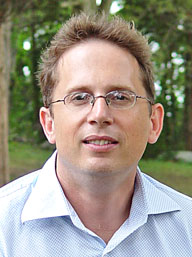 William Fairbrother To understand Will Fairbrother’s work, it helps to talk in cinematic terms. During gene translation, the long strings of letters that make up DNA are copied verbatim into RNA. These strings are then cut, edited and reattached. This process is akin to movie making. A director shoots a series of scenes – “Act One! Take One!” – on a single reel of film. The editor selects the best scenes (exons) and splices them together, leaving the bad or merely mediocre (introns) on the cutting room floor. In filmmaking, overt cues – the shout of “Take!,” the smack of the slate – and subtler style points such as a well-delivered line come together to make editing easier. In the body, a similar dynamic is at play. There are clear chemical cues that signal where gene splicing should happen. These are called 5’ and 3’ splice signals. Weaker cues, termed exonic splicing enhancer sequences or ESEs, also play an important role in splicing. But where are these cues found in the genome? There are hundreds of thousands of possibilities. Locating ESE sequences is critical. Disrupt these signals and diseases such as cancer or cystic fibrosis can occur. This is where Fairbrother fits in. The 35-year-old biologist helped lead a team that developed a computational method for pinpointing ESE sequences across the entire human genome. It does similar duty in combing the genomes of mice, zebrafish and pufferfish. Called RESCUE-ESE, the web-based tool helps medical geneticists determine who may be predisposed to diseases such as breast cancer. Evolutionary biologists can use RESCUE-ESE to study how gene sequences change over time. When the RESCUE-ESE method was announced, in Science in 2002, Fairbrother was a postdoctoral researcher at the Massachusetts Institute of Technology’s Center for Cancer Research. The work sealed his reputation as a creative force in computational biology. PhRMA awarded him a grant and he became an informatics fellow at MIT. At Brown, Fairbrother will serve as assistant professor in the Department of Molecular Biology, Cell Biology and Biochemistry. He will set up a lab at the Laboratories for Molecular Medicine (70 Ship St.) and contribute to both the Center for Genetics, Genomics and Proteomics and the Center for Computational Molecular Biology. Expect a hybrid approach. At Oberlin College, Fairbrother majored in chemistry and minored in studio art. He went on to earn biology degrees from Columbia – then took statistics and a short course on computers at MIT. In Providence, Fairbrother plans to marry the computational tools of a “dry” lab with the bench experiments of a “wet” one. Now that he’s developed a tool for identifying ESEs, Fairbrother wants to understand how splice sites are chosen. He will run tests to see if RESCUE-ESE works in organisms such as yeast. Ultimately, he’d like to process splicing signals to such an extent that scientists can use them to actually predict disease mutations. Brown is a good place to make it happen, Fairbrother thinks. “There is a lot of scientific collaboration, a great undergraduate population and a nice combination of research and teaching,” he said. “It is also growing. That’s attractive.” 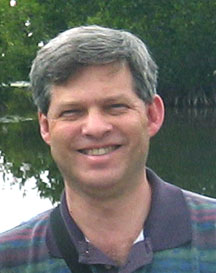 Stephen Helfand Upending the status quo is a Stephen Helfand hallmark. A little more than 20 years ago, he chucked a cushy career as a neurologist to pursue a life in the lab. Now Helfand is one of the nation’s top researchers in the burgeoning biology of aging field – where he continues to take risks. Helfand, for example, dismisses two tenets of aging. One is the idea that the process is one of passive decline. The other is that the aging body is programmed to simultaneously fall apart, a sort of all-systems failure that inexorably leads to disease, disability, death. “My outlook is this: There is no biological reason we have to decline with age,” he said, then laughs. “Of course, decline and death do happen with age. But I argue that it is not inevitable.” Helfand has presented this unorthodox view in leading science journals as well as mainstream news outlets such as The New York Times. It is based, in part, on his most significant scientific achievement to date: Discovery of a gene that, when defective, can double the average lifespan of fruit flies. Dubbed Indy – short for “I’m Not Dead Yet” – the gene can be mutated to create a protein that reduces metabolic efficiency. The mutation mimics the effects of a strict low-calorie diet, a life-prolonging phenomenon known as caloric restriction. Published in 2000, the results caused a scientific stir and fueled the quest for antiaging drugs. Coming from the University of Connecticut Health Center, where he has taught in the Department of Genetics and Developmental Biology, Helfand will make his new academic home in the Department of Molecular Biology, Cell Biology and Biochemistry. He will serve as professor and be part of Brown’s new Center for Genomics and Proteomics. John Sedivy, director of the Center for Genetics, Genomics and Proteomics, calls Helfand’s hiring a coup. Helfand is the winner of an Ellison Medical Foundation Senior Investigator Award and several major grants from the National Institutes of Health, including a MERIT Award. He is also a big – and influential – thinker in the aging field, Sedivy said. “Steve has an opinion and people really value that opinion,” Sedivy said. “And he is after the important questions. What is aging? How does it happen? What is the best way to study it?” Helfand recently collaborated with Brown biology professor Marc Tatar, as well as Harvard Medical School researcher David Sinclair, on experiments that uncovered the first compound to slow aging across species. Results of the work, which focused on the red wine antioxidant resveratrol, were published last summer in Nature. At Brown, Helfand will continue to study single gene mutations and their effects on lifespan as well as caloric restriction, oxidative damage and other aging topics. Does he miss neurology? Not a chance. “The process of maturation and aging,” the 52-year-old said, “is a remarkable and unexplained frontier.” 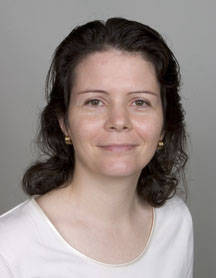 Laurie M. Heller Sound carries information – and not simply through words. A thunderclap announces an approaching storm. A rustle of leaves signals a companion on the trail. A thud, smash and wail from the kitchen confirms that our toddler got into the cookie jar – with bad results. People aren’t typically aware of these sounds and the messages they convey. But they fascinate Laurie Heller, a lecturer in the Department of Cognitive and Linguistic Sciences. Through research, Heller hopes to better understand these “environmental” sounds and how people use them to understand the world around them. “Vision has gotten a lot of research attention,” she said. “But sound is more interesting, more mysterious. Sounds are less tangible. Yet they can carry a great deal of information about events and influence our perception of them.” Heller explains with an example: “Close your eyes. Pay attention to the sounds you hear. You can hear the air conditioner, the cars outside, the person next to you creaking in their chair. These sounds can tell you how large the room is, whether the walls are hard and soft, whether movements are forceful or weak.” Under a new three-year project funded by the National Science Foundation, Heller is studying environmental sounds in her Metcalf Research lab. Subjects listen to brief recordings of a variety of everyday sounds, from exploding fireworks to dripping faucets. Then subjects are asked to describe the event that generated each sound as well as place sounds in different categories. So far, Heller is finding that subjects are surprisingly adept at identifying the source of sounds as well as classifying even brief snippets into basic categories, such as water sounds or wind sounds. Heller said results should shed new light on high-order perception and cognition. Her research can also be used to make virtual reality programs or video games more realistic as well as improve hearing aids or auditory displays for the visually impaired. Her work can even be applied to “earcons” – auditory icons that act as cues on computer programs. (Think of the bleeps, blips and bells on your desktop.) A graduate of the Massachusetts Institute of Technology and the University of Pennsylvania, Heller spent six years in a Navy research lab, studying underwater sound detection and classification. For the last four years, she’s been at Brown, conducting research and creating and teaching a new interdisciplinary course called “Music and Mind.” This year, she’s teaching a freshman seminar on music cognition. Heller said her choice of subject came naturally. “I’m just an auditory person,” she said. As a child, Heller became so engrossed in books that she could hear the sounds described on the page. She played cello and piano and took up guitar as an adult. A big music fan, Heller has listened to a lot of old Bob Dylan of late. It’s a favorite of her toddler, Ben. 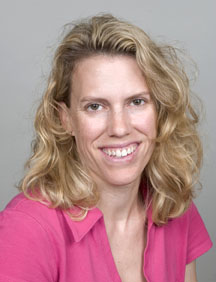 Rebecca Page Proteins literally bring the body to life. They circulate oxygen, digest food, move muscle, make memories, kill bacteria. The size and shape of proteins – each consisting of folded strands of 50 to 5,000 amino acids – dictates their function. A single amino acid defect can cause diseases such as sickle cell anemia. So it is no surprise that X-ray crystallographers are hot commodities in biology departments these days. Crystallographers are protein model makers who use powerful X-rays and sophisticated software to produce digital images of these molecules. The Protein Data Bank, an international repository of protein structures, now holds more than 32,000 models. Rebecca Page helped add several entries. Page joins the ranks of tenure-track faculty this fall as an assistant professor in the Department of Molecular Biology, Cell Biology and Biochemistry. Her lab is located at 70 Ship St., where she collaborates with Gerwald Jogl, Dale Mierke, Wolfgang Peti, Joanne Yeh and Art Salomon in the Center for Genetics, Genomics and Proteomics. While these scientists use different techniques and pursue different targets, they’re all interested in finding out how proteins are built. Before coming to Brown, Page worked in the Joint Center for Structural Genomics at the Scripps Research Institute. She was part of a crystallography group that solved the structures of 100 proteins in a single year. Her own section solved 25 structures, including one for a protein that, when mutated, causes a severe form of mental retardation. “It was an incredible time,” she says. “Everyone had lots of ideas and was working around the clock. It was an exciting and rewarding experience at Scripps.” Crystallography isn’t easy. It requires painstaking work with hundreds of solutions in an effort to force proteins to form crystals. That’s just the beginning. Crystals are then frozen in liquid nitrogen and bombarded by X-rays. The resulting data is processed through complicated computer programs then mapped and modelled. Results can be spectacular. Final structures form sheets and helices, appearing to the untrained eye as arty tangles of primary-colored pasta. Such a visual end product appealed to Page, who happened upon molecular modeling while studying biochemistry and applied math as a University of Arizona undergraduate. “I was studying fruit flies,” she recalls. “If the flies were exposed to higher temperatures during development, a certain protein could not function and the flies’ brains would not develop. And they would die. So clearly, this protein was important. But I couldn’t see what was happening. I wanted to know what this protein was doing and how it interacted with DNA.” At Brown, Page is particularly keen on solving the structures of proteins instrumental to brain function and development and immune system regulation. She is pursuing the structure, for example, of proteins that form dendritic spines. Defects in these knobby bits, which protrude from the slender branches of nerve cells, are tied to schizophrenia, drug and alcohol addiction and Fragile X Syndrome, the most common cause of inherited mental retardation. “If you want to understand disease, you have to understand proteins,” Page says. “And to understand proteins, you need to know how they’re built.” 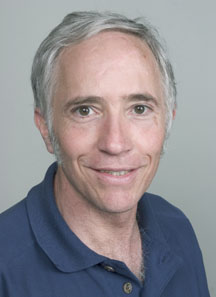 David Ress One of the biggest questions in brain science is this: How does this three-pound organ compute? The answer would explain how the brain takes sensory data and effortlessly transforms it into thoughts and feelings, language and movement. David Ress, associate professor of neuroscience, is trying to solve this puzzle. His tool of choice: magnetic resonance imaging (MRI). MRI machines use a strong magnetic field, radio waves and special software to create images of the body’s insides from every angle. For neuroscientists, the scanner creates a window into how the brain works. When a part of the brain is active, blood flow increases to the area – a change that MRI picks up. That’s why the technique is called functional MRI (fMRI). “FMRI can tell us what areas of the brain are working and how hard,” Ress says. “What parts of the brain are turned on during a particular task is very powerful information.” As a senior scientist at Stanford University, Ress conducted fMRI experiments that involved showing people images on a computer screen and asking them to try to recognize faint patterns in the pictures. Meanwhile, the MRI scanned the peoples’ brains while they worked. The resulting images showed which areas of the visual cortex were active during perception. Scientists across the country now use similar techniques to better understand a host of brain functions, such as object recognition and fear response. At Brown, Ress will have state-of-the-art hardware to work with. Along with neuroscience colleague Jerome Sanes, Ress will oversee the operation of a new 3-Tesla MRI machine to be installed in the Life Sciences Building under construction on Meeting Street. The $2.5-million machine, equipped with special magnets twice as powerful as on standard MRI machines, will be one of only a handful of its kind in the United States. Ress and his team will tweak this powerful machine so that it can conduct a wide range of experiments, including making better images of heart tissue and cartilage. Ress certainly has the tinkering skills; He’s an engineer by training. After weekends spent soldering and drilling in his father’s California plasma physics laboratory, Ress went on to earn a bachelor’s degree in electrical engineering from the University of California–Davis. He then earned master and doctorate degrees in the subject from Stanford. Ress set out to develop feasible fusion energy, with its promise of a safe and clean supply of electricity. For 11 years, he pursued this passion at Lawrence Livermore National Laboratory. But federal support for magnetic fusion dried up and Livermore’s laser-fusion program took on a decidedly defense-oriented focus. “I didn’t want to help design nuclear bombs,” he said. So Ress, who once held dreams of becoming a doctor, went back to Stanford as a postdoctoral fellow to study the brain. “I knew how to do science – to ask questions and develop techniques to try to answer them,” he says. “I figured I might as well apply that thinking to study the most fascinating organ of all: the brain.” 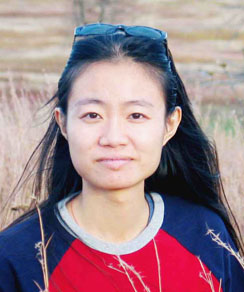 Zijin (Jean) Wu Jean Wu is a first on the Brown faculty. She is the University’s only biostatistician with a background in biology. Wu earned degrees in molecular biology from Peking University and the University of Southern California, respectively, before receiving a Ph.D. in biostatistics from Johns Hopkins. The 28-year-old also spent a few years at the bench studying how to inhibit proteins that trigger apoptosis, or cell suicide, a phenomenon involved in normal fetal development as well as such diseases as Parkinson’s, Alzheimer’s, cancer and AIDS. Two discoveries were published in top journals. An aptitude for cells, as well as numbers, is currently a powerhouse combination in science. Now that every chemical base in the human genome is identified and ordered – ditto for the genomes of fruit flies, rats, mice, chickens, dogs and honey bees – researchers are combing through the data to understand the molecular basis for health and disease. As collectors and analyzers of vast amounts of data (which is pretty much genetic code in a nutshell), statisticians are perfectly poised to help tease out cures from billions of DNA bases. That is why Wu will be a much-pursued research partner as a new assistant professor of community health. “If you’ve worked at the bench, you know how to approach the data,” said Constantine Gatsonis, head of the department’s Center for Statistical Sciences. “So Jean is a rare bird – and, I suspect, will be a popular one. We did very well getting her.” Growing up in China, Wu was fascinated with the complexity and beauty of the microscopic world. Then at USC she took a computational biology course with Michael Waterman, a pioneer in DNA sequencing, and she found her niche. “With computation, there is a measure of uncertainty that I enjoy,” she said. “And I guess I am more of an analyzer than an experimenter.” Wu’s forte is data picked up by DNA copies affixed to microchips, a laboratory tool called a microarray. These probes bind to complementary bits of DNA, charting the transcription of thousands of genes simultaneously. Results from microarray experiments can show how the body changes at the molecular level during development or disease. With her academic advisor at Hopkins, Wu developed a new software package that estimates and adjusts for the “background noise” that can skew microarray data. Called GCRMA, the model is used around the world. Wu spent long nights in the “Genome Café” – a computing lab at Hopkins – developing and improving the method. Apocalyptica, a group of Finish cellists who play heavy metal, kept her company on a pair of headphones. Wu got on the Web and showed a visitor e-mail messages from scientists in Germany, Italy and the United States who use GCRMA. “It’s great to get feedback from people who use the system and say that they’re getting more accurate results,” Wu said. “It’s better science through statistics.” ###### News Service Home | Top of File | e-Subscribe | Brown Home Page | ||||